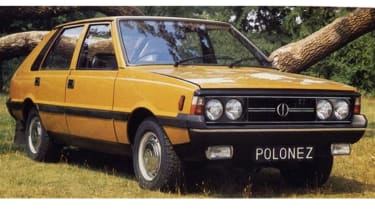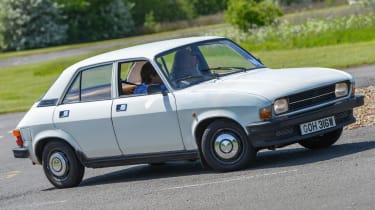The worst cars in the world
We run down the world's worst cars - as voted for by Carbuyer readers.

3. Lada Riva
Did you hear about the new 16-valve Lada? Eight valves in the engine and eight valves in the radio. What do you call a convertible Lada? A skip. These were just some of the jokes commonly heard in playgrounds in the 1980s, such was Lada’s reputation.
Launched gradually in Russia and Europe in the 1980s, the Lada Riva was another model that owed its existence to a pensionable Fiat. This time it was the 124, a car that launched in Turin in 1966. Basing a new car on a 14-year-old design would be unthinkable now, but Lada was clearly onto something, as these underpinnings formed the core of the Lada range until only a few years ago.
For all the jokes though, total sales of the 124 and Riva are thought to have exceeded 14 million. The Lada was a common sight on UK roads in the 1980s and 1990s, but it was lacklustre to drive and crude inside. On the plus side, there was plenty of space inside and it was easy to fix – something owners regularly needed to do.
2. FSO Polonez
Although the FSO Polonez first went on sale in 1978, it actually owes its existence to the Polski Fiat 125p, which launched way back in 1967. Fabryka Samochodów Osobowych (FSO) built the Polonez under license from Fiat, but it had an entirely new body designed by Giorgetto Giugiaro. Power came from the 125p’s 1.3 and 1.5-litre engines, as FSO was unable to purchase a license for a 2.0-litre engine from Fiat.
For all its faults – more on those in a moment – the Polonez was the only Eastern European car to pass US crash tests. Remarkably, it was sold in the UK until 1997, when emissions regulations defeated it.
The Polonez was cheaply built – understandable given Poland’s position behind the Iron Curtain at the time – powered by inefficient engines, ugly, poorly equipped and utterly undesirable. Perhaps its only saving grace was that it didn’t attract the same slew of jokes as…
1. Austin Allegro
Topping the list with almost a quarter of all votes was the Austin Allegro. Heralded as the saviour of the British car industry, it replaced the Austin 1100 (and its siblings) and was a precursor to the Austin Maestro.
Over 10 years, more than 640,000 Allegros found homes, mainly in the UK. The fundamental problem was the Allegro’s designers failed to spot the growing market for small practical hatchbacks, and internal politics dictated that Austin’s only hatchback would be the Maxi.
The car was designed by British Leyland’s Harris Mann. But according to Mann, the sleek lines of his handsome design sketches were compromised by management’s insistence on installing a bulky ventilation system and an engine that was better suited to larger models.
Early cars were underdeveloped, leading to a reputation for below-par build quality the Allegro would never shift, even though the Allegro 2 of 1975 was far better.
Most Popular

Omoda E5 targets rivals: now with zero deposit and APR
Tips & advice

Car dashboard warning lights: what does each symbol mean?

Electric car charging stations: public networks, charger types, apps and maps











